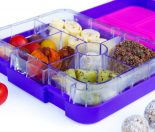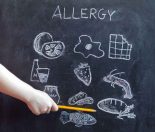Childhood constipation is a common complaint in pediatrics in the Western world. Find out more about preventing constipation.
It is not uncommon for children to suffer from constipation.
However it is important to consider the definition of constipation first. Constipation is not just diagnosed based on the frequency of bowel motions over the week. Some children may have a regular pattern of going once or twice a day. Other children may have the normal pattern of going every other day.
Constipation is diagnosed if your child finds it difficult or painful to pass a bowel motion – diagnosis is not based just on the frequency of bowel motions. Bowel motions should be soft and easy to pass.
Causes of constipation
Constipation can be caused by several factors – such as holding on and resisting the urge to pass a bowel motion (this can be common with school children where they feel uncomfortable using the toilets at school).
It can also be affected by some dietary factors such as inadequate fibre intake and/or a poor fluid intake. A diet which is too high in fibre coupled with inadequate fluids can also lead to constipation.
Other factors such as medications can sometimes contribute to constipation.
If your child has had a long history of constipation it is beneficial to discuss this with your doctor to help identify the best treatment process initially.
At the same time look at your child’s diet and check that it does offer a good amount of fibre.
What is dietary fibre?
Dietary fibre is the part of plants we cannot digest. It plays an important role in the prevention of constipation. Fibre can be found only in foods of plant origin: grains, cereals, vegetables, fruit, legumes, lentils, nuts and seeds. Animal foods such as meat, fish and dairy products do not contain dietary fibre.
A word of caution:
Excessive fibre can interfere with the absorption of some nutrients such as iron and zinc due to the phytates found in plant foods. For young children the use of bran is not recommended as it is too high in fibre. Very heavy grainy bread should not be given to children under the age of two.
Excessive fibre can also be a cause of constipation.
How much fibre do we need?
As a general quick check your child should be getting enough fibre if they are getting the right number of serves from the following two food groups:
| Food Group | Number of Serves to have each day | Example of One Serve |
| Bread & Cereal Group | At least 4 serves for 2-5 year oldsAt least 5 serves for school children | 1 medium slice bread or 1 small bread roll or muffin or 2 large or 3 small crackers1/2 cup cooked cereal3/4 cup ready to eat breakfast cereal
1/2 cup cooked rice, pasta or noodles |
| Fruit & Vegetables | At least 2 vegetable & 2 serves fruit for 2-5 year oldsAt least 3 vegetable & 2 serves fruit for school children | A serving is what fits into the palm of your child’s hand. Could be raw or cooked. |
If your child is not achieving the recommended serves from these groups they may not be having enough fibre. Gradually increase the amount of fruit, vegetables and cereals in the diet.
If your child is exceeding these amounts they may be having too much fibre, especially if you are encouraging a lot of the high fibre breads and cereals.
Another way to assess the adequacy of fibre in the diet is to consider the following recommendations:
Adults should eat 30 grams fibre per day.
A child’s recommended fibre intake is based on their age in years plus 5 – 10 grams fibre. So a five year old would need 10-15 grams of fibre in their diet.
Check the table at the bottom of the article for a quick guide on the fibre content of different foods.
Fluids
As fibre will act like a sponge in your gut it is important to include enough fluid in the diet. With out adequate fluid, bowel motions become hard and difficult to pass.
The best way to ensure your child has enough fluid is to provide a drink at each meal and snack time. This will ensure that fluid is included over the day at least 5 times. Fluid that is added to things such as breakfast cereals will also count as fluid over the day.
Water is the best fluid you can offer. High milk intakes can be constipating for some children. Ensure that your child is not drinking more than 500-600ml milk over the day.
How to boost the fibre in your child’s diet
You may not want to try all these suggestions as this could result in a fibre intake which is too high. Slowly increase the fibre in your child’s diet by introducing one or two changes.
Bread: once your child is over 15 months of age use wholemeal or wholegrain breads. If you struggle to get your child to eat wholemeal or wholegrain breads try fibre white varieties.
Cereals: use wholegrain cereals such as oats, weetbix, whole grain Kornies, fruity bix. If your child is not keen on these try mixing them with their favourite cereal and gradually increase the amount of the higher fibre cereal. A high fibre breakfast cereal is one that has 6 grams fibre in 100 grams – so check out the food labels on your favourite cereals.
Baking: use some wholemeal flour in the baking and/or add dried fruit where suitable.
Crackers: choose higher fibre crackers such as ryvita, wholemeal crackers, soy and linseed crackers.
Vegetables: Encourage vegetables any way you can – raw, fresh, frozen, chopped, grated, vegetable sticks – the options are endless. If your child is not very good with vegetables try adding extra vegetables to casseroles, or grate them into dishes such as spaghetti bolognaise, add extra vegetables to items such as macaroni cheese.
Fruit: serving fruit with the skin on is one way of boosting fibre. Fruit juice has little fibre so it is best to serve fruit in its whole form rather than as juice. Small amounts of juice may be useful for very young children though. Dried fruit is also high in fibre – apricots, raisins, figs and prunes are all good choices. As dried fruit is high in sugar and sticks to teeth try serving dried fruit with other foods so the risk of dental caries is reduced. Prunes or kiwifruit can be useful in treating constipation.
Nuts: try giving crunchy peanut butter or for over 5 year olds you can try whole nuts. (Avoid nuts if there is a high risk of food allergies in the family).
Dried beans: beans such as baked beans, cannelini beans, haricot beans and lentils can all boost the fibre intake. You could try adding some dried beans to casseroles or even serve baked beans for breakfast.
Regular meals
Eating at regular times also helps to stimulate the gut. Make sure your child is including breakfast each day – and if possible include fibre rich foods at this time such as fruit, wholemeal or whole grain breads or a fibre rich breakfast cereal.
Conclusion
Check that your child is getting a good range of the fibre rich foods by encouraging fruit, vegetables and a good range of breads and cereals. Slowly increase the fibre content if you need to. Encourage a regular eating pattern and plenty of fluids over the day.
To find out the fibre content of foods refer to the attached chart.
Constipation won’t resolve over night so you need to be consistent with any changes you implement.
Useful articles
To read about School Lunches, click here
For information for great family Snacks, visit our Kiwi Families article






